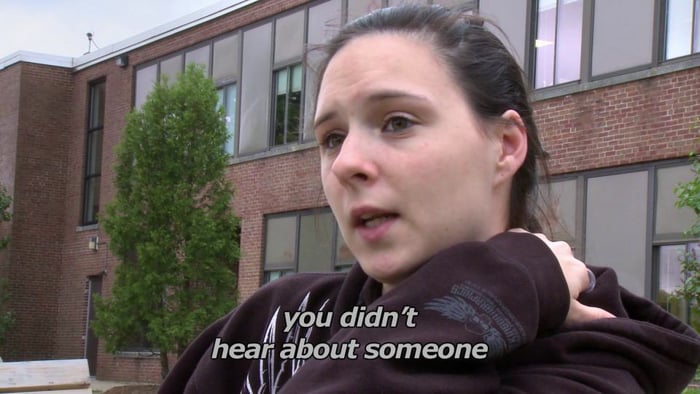
In Ireland, today, Ombudsman for Children Emily Logan issued a report, entitled Young People in St. Patrick’s Institution. St. Patrick’s is a men’s, and boys’, prison for children and adults between the ages of 16 and 21. It is the only place in Ireland that `accommodates’ male prisoners aged 16 and 17, whether they have been sentenced or are awaiting trial. The boys of St. Patrick’s come from all over the country.
The report describes St. Patrick’s Institution as follows: “St. Patrick’s Institution is a closed, medium security prison managed by the Irish Prison Service, which holds remand and sentenced young people between 16 and 21 years of age. Adjacent to Mountjoy Prison in Dublin, the Institution’s main buildings are part of a Victorian prison complex dating back to 1850 and were the site of the women’s prison before becoming a place of detention for young offenders.” Women and children first, or, in this case, women first, then children, both subjected to a male adult prison regime.
As is so often the case with Victorian prisons still in use, St. Patrick’s has been criticized for a long time, for decades. The 1985 Whitaker Report called for St. Patrick’s closure, arguing that it was too old and dilapidated to repair, arguing further that it contributed to further juvenile delinquency rather than rehabilitation. That was over 25 years ago. In July 2007 the Irish Penal Reform Trust issued a new report, The Whitaker Committee Report 20 Years On: Lessons Learned or Lessons Forgotten? It described the earlier report as “the most detailed and thoughtful analysis of Irish prisons to date”. There was much discussion of lessons learned, forgotten, suppressed, ignored. The 200 Years On analysis described deteriorating conditions. The prison was going from very bad to much worse.
Today, Wednesday, February 9, 2001, that prison still houses child prisoners, still does harm to them, their families, and their communities, still defines the Irish state.
According to today’s report, every aspect of St. Patrick’s denies and offends the particularities of the prisoners as children. For many, contact with family is difficult because the prison is far from home, and so getting there is expensive and time consuming. Remand prisoners are allowed five fifteen-minute visits per week. Sentenced prisoners are allowed two half-hour visits. Imagine the family that will travel hours for a fifteen-minute `interview’. Then imagine the child.
Meanwhile, maintaining and developing healthy relationships with family and friends is made almost impossible by visiting conditions and regulations that prohibit intimacy or privacy.
Children can’t be children, parents can’t be parents.
When the children’s wing, the B-Wing, is overcrowded, either the boys are dumped two to a bed, or they’re moved to C- and D-Wings, where adult prisoners are kept. Again, this includes children who are remand prisoners.
The food is terrible, the educational facilities are outmoded and archaic, the health facilities are decrepit, there is little attention to rehabilitation and reintegration in any way that is attentive to the needs of children, of adolescents. The boy’s in jail, he’s treated like a man.
Finally, there’s `the pad’, or special observation cell. The prison administration claims this is only used to protect the prisoners. The prisoners see it as solitary confinement: degrading, punitive, silencing. Putting an adult in long term solitary confinement is torture. Placing an adolescent in a `seclusion room’, without explanation, without … anything, is as well. `The pad’ teaches the young that they must not complain, they must not whimper, they must just tough it out and get through. If they have problems, especially mental health problems, they must be silent. They must not seek help. They must learn to shut up. That is the lesson of solitary confinement when administered on the young.
None of this is new and none of this is news. The conditions of St. Patrick’s have been known for longer than any of these children have walked the earth. This is what it means to be a child in the care of the modern State.
(Image Credit: The Ombudsman for Children, Ireland) (Video Credit: The Ombudsman for Children, Ireland / YouTube)